Abstract
Electron transport in chloroplasts isolated from desiccated sunflower (Helianthus annuus L. cv. Russian Mammoth) leaves was compared with electron transport in sunflower chloroplasts in sorbitol-containing media having various osmotic potentials. In media having low osmotic potentials and dichloroindophenol as electron acceptor, the activity for electron transport was inhibited, but the inhibition was much less than that due to comparable desiccation in vivo. The inhibition at low osmotic potentials was rapidly reversed by returning the chloroplasts to media having high osmotic potentials, but the activity of chloroplasts from desiccated tissue showed no reversal when the chloroplasts were placed in media having high osmotic potentials. Nevertheless, the inhibition of chloroplast activity due to desiccation in vivo was basically reversible, because chloroplasts recovered quickly when they were rehydrated in vivo. The large differences between desiccation in vivo and exposure to low osmotic potential in vivo indicate that osmotic solutions did not reproduce the effects of tissue desiccation. It is concluded that decreases in the Gibbs free energy of water due to decreased osmotic potentials probably have only a small effect on electron transport in chloroplasts from desiccated tissue and do not account for the major effects of leaf desiccation on electron transport.
Full text
PDF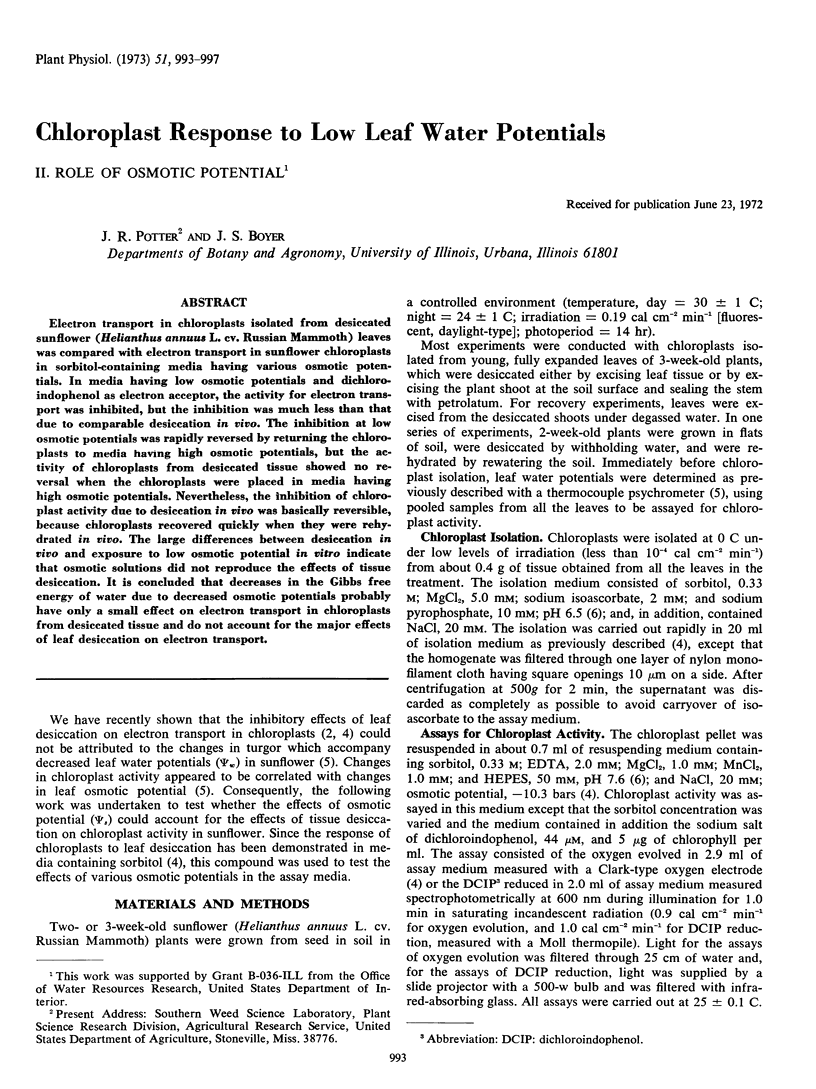
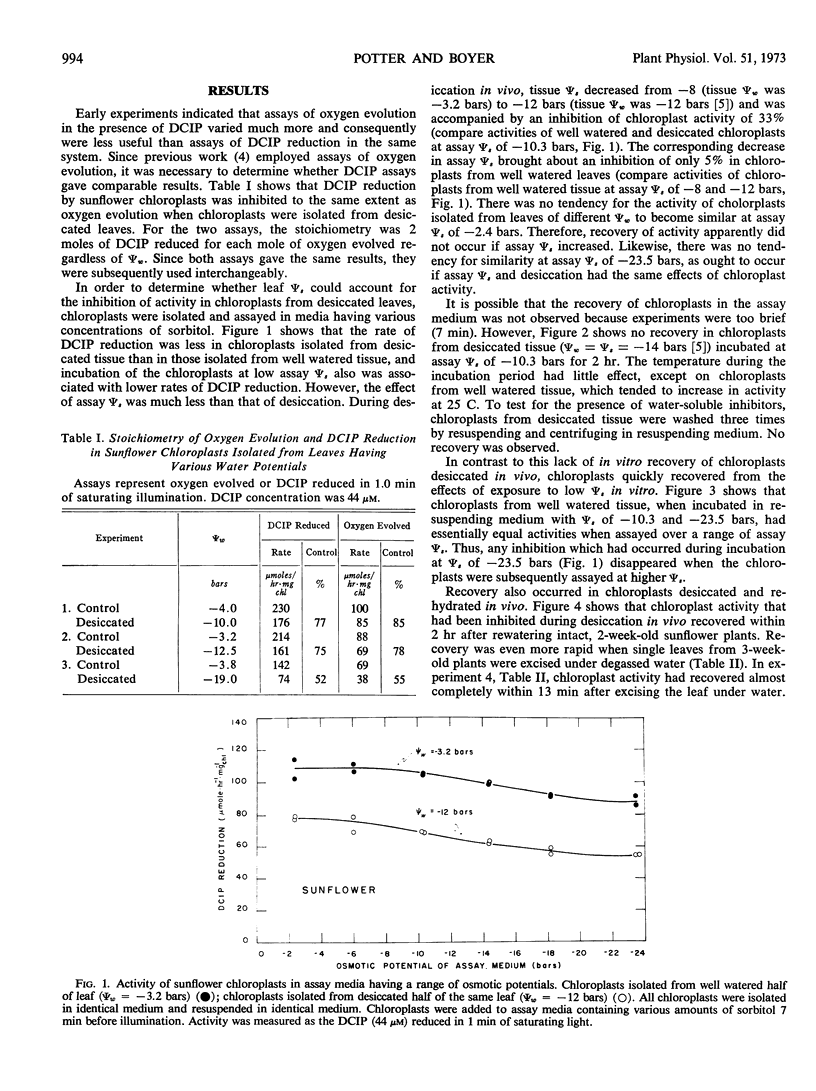
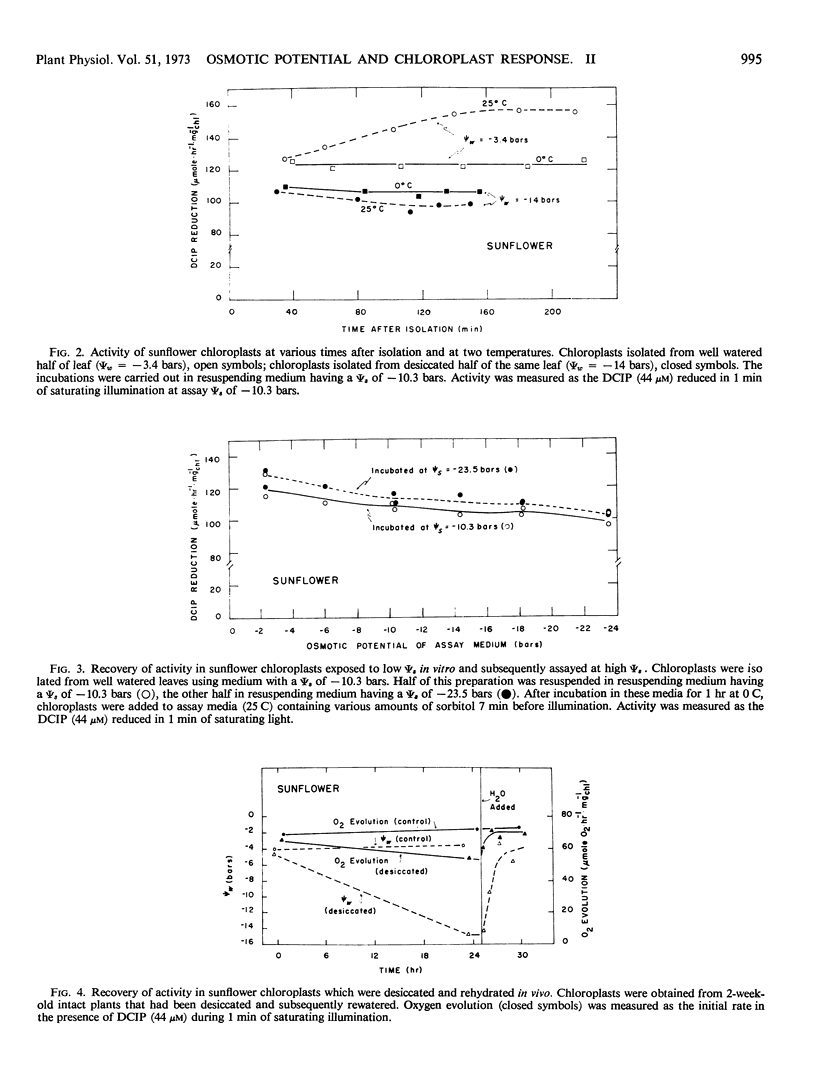
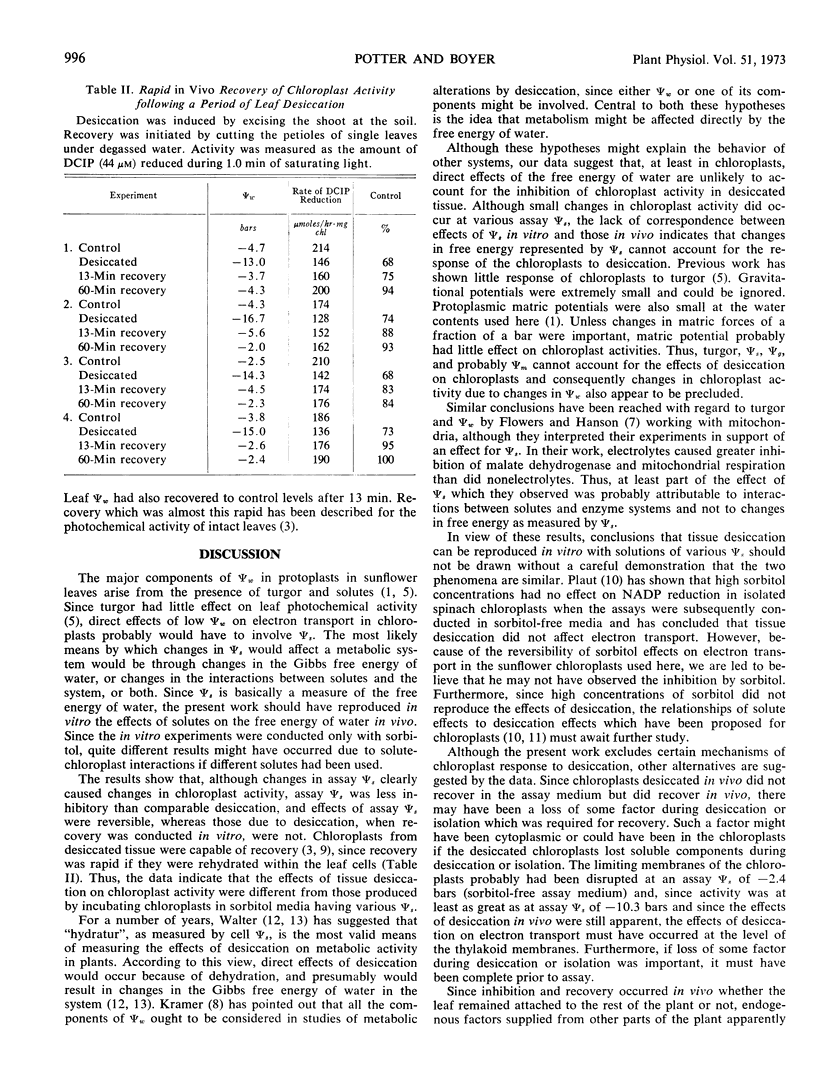
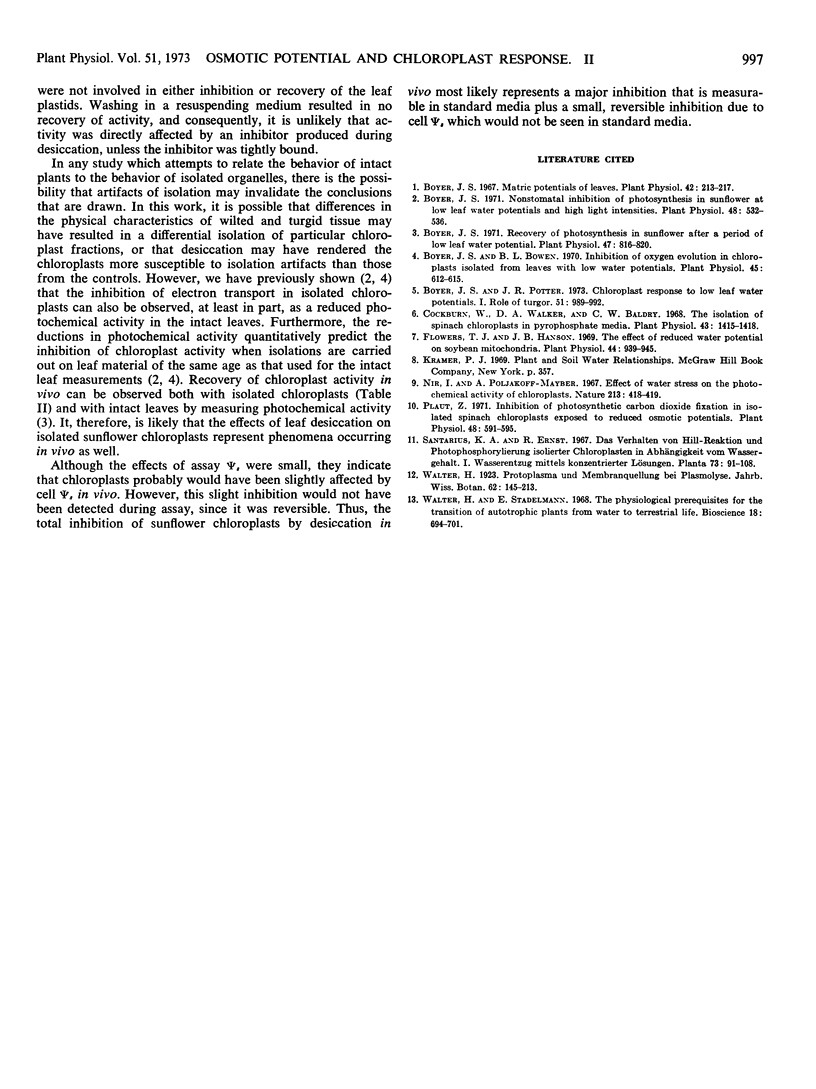
Selected References
These references are in PubMed. This may not be the complete list of references from this article.
- Boyer J. S., Bowen B. L. Inhibition of oxygen evolution in chloroplasts isolated from leaves with low water potentials. Plant Physiol. 1970 May;45(5):612–615. doi: 10.1104/pp.45.5.612. [DOI] [PMC free article] [PubMed] [Google Scholar]
- Boyer J. S. Matric potentials of leaves. Plant Physiol. 1967 Feb;42(2):213–217. doi: 10.1104/pp.42.2.213. [DOI] [PMC free article] [PubMed] [Google Scholar]
- Boyer J. S. Nonstomatal inhibition of photosynthesis in sunflower at low leaf water potentials and high light intensities. Plant Physiol. 1971 Nov;48(5):532–536. doi: 10.1104/pp.48.5.532. [DOI] [PMC free article] [PubMed] [Google Scholar]
- Boyer J. S., Potter J. R. Chloroplast response to low leaf water potentials: I. Role of turgor. Plant Physiol. 1973 Jun;51(6):989–992. doi: 10.1104/pp.51.6.989. [DOI] [PMC free article] [PubMed] [Google Scholar]
- Boyer J. S. Recovery of photosynthesis in sunflower after a period of low leaf water potential. Plant Physiol. 1971 Jun;47(6):816–820. doi: 10.1104/pp.47.6.816. [DOI] [PMC free article] [PubMed] [Google Scholar]
- Cockburn W., Walker D. A., Baldry C. W. The isolation of spinach chloroplasts in pyrophosphate media. Plant Physiol. 1968 Sep;43(9):1415–1418. doi: 10.1104/pp.43.9.1415. [DOI] [PMC free article] [PubMed] [Google Scholar]
- Flowers T. J., Hanson J. B. The effect of reduced water potential on soybean mitochondria. Plant Physiol. 1969 Jul;44(7):939–945. doi: 10.1104/pp.44.7.939. [DOI] [PMC free article] [PubMed] [Google Scholar]
- Plaut Z. Inhibition of photosynthetic carbon dioxide fixation in isolated spinach chloroplasts exposed to reduced osmotic potentials. Plant Physiol. 1971 Nov;48(5):591–595. doi: 10.1104/pp.48.5.591. [DOI] [PMC free article] [PubMed] [Google Scholar]


